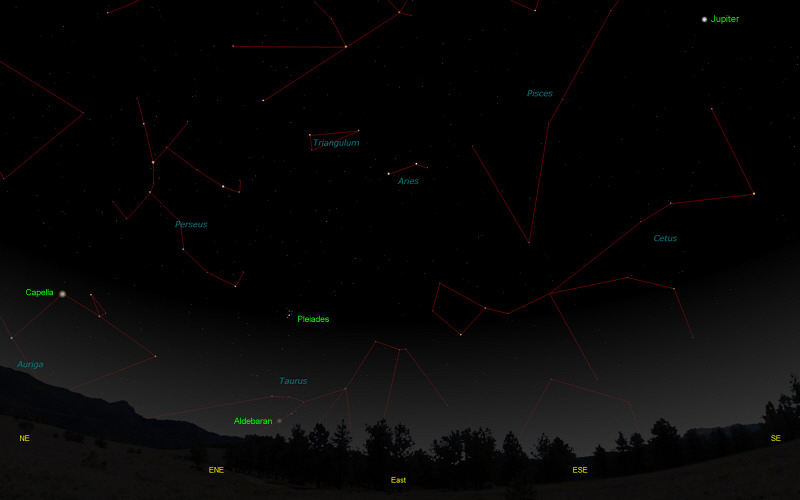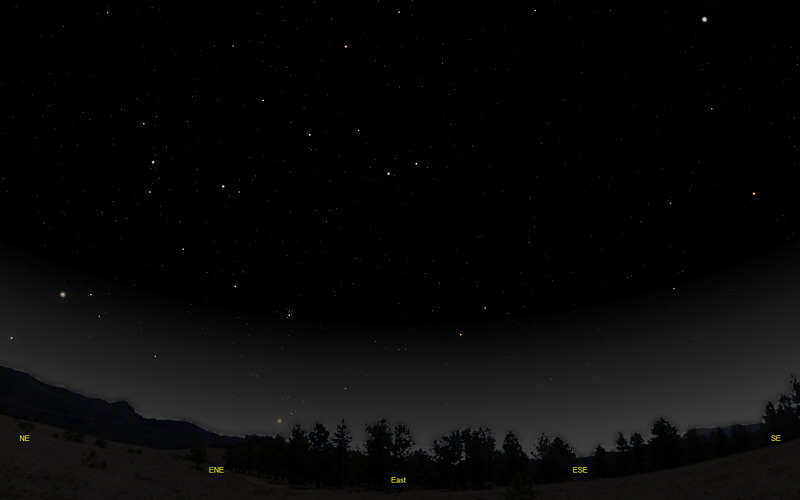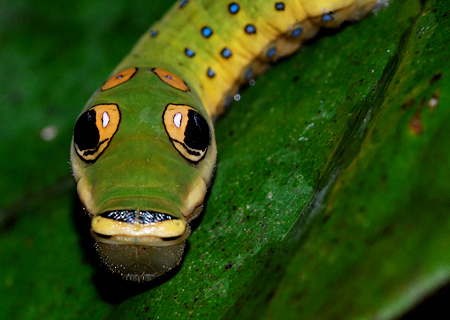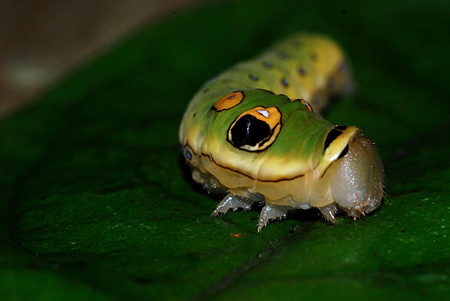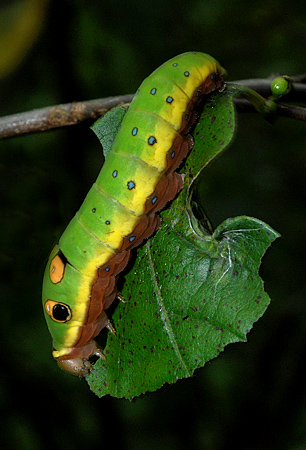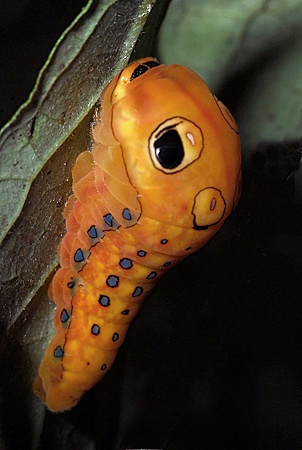The purpose of this feature is to give scout leaders, educators and naturalists an idea of some of the natural events coming up each month. We will try to cover a variety of natural events ranging from sky events to calling periods of amphibians, bird and mammal watching tips, prominent wildflowers and anything else that comes to mind. We will also note prominent constellations appearing over the eastern horizon at mid-evening each month for our area for those who would like to learn the constellations. If you have suggestions for other types of natural information you would like to see added to this calendar, let us know! Note: You can click on the hyperlinks to learn more about some of the featured items. To return to the Calendar, hit the "back" button on your browser, NOT the "back" button on the web page. All charts are available in a "printer friendly" mode, with black stars on a white background. Left clicking on each chart will take you to a printable black and white image. Please note that images on these pages are meant to be displayed at 100%. If your browser zooms into a higher magnification than that, the images may lose quality. Though we link book references to nationwide sources, we encourage you to support your local book store whenever possible. Notes and Images From September 2010 On September 12th, after the passage of a cold front, we had a beautiful clear night sky. I grabbed my 10x50 binoculars and walked down to the edge of our field. Crickets still droned their summertime songs in the cool night air and a Great Horned Owl called from the tree line bordering our field. These owls are our earliest nesters, and this time of year you can often hear males and females calling back and forth as part of their courtship. I lay on my back and looked upward at Cygnus, the Swan. The Milky Way shone brightly overhead and the binocular field was crowded with faint stars. I looked for one of my favorite deep sky objects in Cygnus, the Veil Nebula. This supernova remnant is usually something of a binocular challenge. To my surprise I could see the eastern part of the nebula easily. At these low light levels no color is visible, but the small curving arc of nebulosity looked like a faint grayish cloud. I could also just make out a little nebulosity around the star 52 Cygni. Searching near the bright star Deneb, at the tail of the Swan, I saw the North American Nebula more clearly than I've ever seen it before. It was a one-in-a-thousand night, one I'll remember for a long time. We took the above image of a small portion of the Veil Nebula on the nights of September 4th and 5th. The very bright star in the image is the faint naked eye star 52 Cygni. It's a foreground star and is not connected with the nebula. The Veil is a remnant of a supernova that exploded around 15,000 years ago. It's believed to be about 2,500 light-years away. Shock waves traveling outward from the explosion heat up molecules of hydrogen and oxygen, causing them to glow. The reds in the image are fluorescing hydrogen, the blues fluorescing oxygen. Present but not visible are heavier elements like gold and silver, which are created only in supernovas. The cosmic shock waves racing outward from the supernova carry the remains of a shattered world and the seeds of worlds yet to come. The wisps of nebulosity represent both the past and the future. In 1955 Arthur C. Clark wrote a short science fiction story, "The Star," about an expedition sent to explore the aftermath of a supernova. In that story the associated nebula was called the Phoenix Nebula. Our best telescopic view of the Veil Nebula was from Luna Lake in eastern Arizona, at 8,000 feet above sea level. We viewed it through our 20" Newtonian reflector. Although no color was visible, many of the fine filaments visible in the image were seen. To see a higher resolution version of the image and a binocular finder chart, click here. For more about the nebula and wide field images of the nebula taken in October 2008, click here.
Sky Events for October 2010: Evening Sky: If you have binoculars, you may want to try to glimpse Comet Hartley 2. This comet passes by Cassiopeia during the first of October. NASA has redirected its Deep Impact spacecraft to fly by the comet on November 4th, taking images from as close as 600 miles. So it's possible to get an earth-based binocular view followed by an NASA closeup. Expect the comet to be relatively faint. For more information and a Sky and Telescope finder chart, click here. To check the schedule for on-line NASA TV, click here. Venus continues to shine brightly low in the southwestern sky after sunset during the first part of the month. It will then disappear into the twilight glow. Look for Jupiter low in the east at dusk at the beginning of the month. It will be the brightest star-like object in the eastern sky. To get the best telescopic views, wait until the planet has climbed high above the horizon. Morning Sky: Mercury had its best dawn apparition of the year in September. You may still be able to spot it during the first week of October. Pick a spot that has a good flat eastern horizon. It will soon be lost in the dawn glow. Towards the end of the month, look for Saturn low in the east in the dawn sky. It's nice to see that the rings will finally be opening up.
All times noted in the Sky Events are for Franklin, Tennessee and are Central Daylight Time. These times should be pretty close anywhere in the mid-state area. Constellations: The views below show the sky looking east at 9:30pm CDT on October 15th. The first view shows the sky with the constellation outlined and names depicted. Star and planet names are in green. Constellation names are in blue. The second view shows the same scene without labels. Jupiter continues to shine brightly in the southeastern sky in the early evening. Prominent constellations include Andromeda, Perseus, Triangulum, the Triangle, Aries, the Ram, and Cetus, the Sea Monster. Auriga, the Charioteer, with its bright star Capella, and Taurus, the Bull, are rising in the northeast. The bright star Aldebaran, a red giant representing the eye of the bull, should be just over the northeastern horizon. Above it, look for the Pleiades, a beautiful open star cluster. Also called the "Seven Sisters," it has been known since antiquity. In Japan it is known as Subaru, and the Subaru automobile is named for this cluster.
On Learning the Constellations: We advise learning a few constellations each month, and then following them through the seasons. Once you associate a particular constellation coming over the eastern horizon at a certain time of year, you may start thinking about it like an old friend, looking forward to its arrival each season. The stars in the evening scene above, for instance, will always be in the same place relative to the horizon at the same time and date each October. Of course, the planets do move slowly through the constellations, but with practice you will learn to identify them from their appearance. In particular, learn the brightest stars for they will guide you to the fainter stars. Once you can locate the more prominent constellations, you can "branch out" to other constellations around them. It may take you a little while to get a sense of scale, to translate what you see on the computer screen or what you see on the page of a book to what you see in the sky. Look for patterns, like the stars that make up the constellation of Perseus. The earth's rotation causes the constellations to appear to move across the sky just as the sun and the moon appear to do. If you go outside earlier than the time shown on the charts, the constellations will be lower to the eastern horizon. If you observe later, they will have climbed higher. To observe faint objects, it's always better to wait until they are high in the sky. As each season progresses, the earth's motion around the sun causes the constellations to appear a little farther towards the west each night for any given time of night. The westward motion of the constellations is equivalent to two hours per month. Sky & Telescope's Pocket Star Atlas is beautiful, compact star atlas. It is destined to become a classic, and is a joy to use at the telescope. A good book to learn the constellations is Patterns in the Sky, by Hewitt-White. You may also want to check out at H. A. Rey's classic, The Stars, A New Way to See Them. For skywatching tips, an inexpensive good guide is Secrets of Stargazing, by Becky Ramotowski. A good general reference book on astronomy is the Peterson
Field Guide,
A Field Guide to the Stars and Planets, by Pasachoff. The book retails for around $14.00. Starry Night has several software programs for learning the night sky. Visit the Starry Night web site at www.starrynight.com for details.
Amphibians:
Some frogs and toads continue to call in October. Listen for Spring Peepers to call from patches of woods in the fall. Upland Chorus Frogs sometimes give a very dry, raspy version of their call in October. Warm-weather species like treefrogs seldom call now, but you can sometimes find them foraging in trees and shrubs. With dry conditions this fall we have not heard as much calling activity as we usually do. You can locate many of the frogs and toads that have been calling more frequently earlier in the year by driving the back roads slowly on rainy nights. This is a two person job. One person watches the road for amphibians and one person looks out for other vehicles. Continue to look for salamander species that breed in the fall, like the Marbled Salamander. Recommended: The Frogs and Toads of North America, Lang Elliott, Houghton Mifflin Co.
Spicebush Swallowtail
Caterpillars:
Some caterpillars can still be found in October. Few are as strikingly marked as those of the Spicebush Swallowtail, Papillo troilus. The white or greenish eggs of these butterflies are laid singly on the undersides of leaves, usually on Spicebush or Sassafras. Caterpillars molt (shed their skin) several times as they grow in size, and the periods between molts are referred to as instars. They typically go through five or six instars before forming a chrysalis. The appearance of the caterpillar can change dramatically from one instar to the next. In the first four instars of the Spicebush Swallowtail caterpillar, the markings are dark brown and white, but in the 5th instar the caterpillar takes on a striking green and yellow coloration. Eyespots that appeared on the thorax in earlier instars are much more prominent now, and from the front the caterpillar looks remarkably like the head of a snake. This snake mimicry probably helps ward off predators like birds for whom the caterpillars are a tasty meal. Amazingly, the black areas of the eye have reflective qualities and show highlights just as a normal eye does. The overall effect is stunning. The actual head of the caterpillar is beneath the "mouth" of the snake, and if the caterpillar lifts its head and turns, the illusion rapidly vanishes, as shown in the images above. Some of the 5th instar Spicebush Swallowtail caterpillars that we observed had lower bodies that were tan in color and some had a dark chocolate brown color in these areas.
The Spicebush leaves offer both shelter and food for the developing caterpillars. The caterpillars attach silk strands to the leaves on which they wish to make their home, and the leaves curl around them, forming a concealing tube. You can often find the caterpillars this way, by simply looking for Spicebush leaves that are folded over. On larger leaves, the fold line may not be on the mid-rib of the leaf, but between the mid-rib and the margin of the leaf. If you carefully lift up the margin of the leaf from one of these folds, you may find a caterpillar within. The caterpillars always position themselves in the leaf tubes with their head up, to better fool would-be predators. The caterpillars will remain in this shelter until they feed, and we found them feeding at intervals day and night. Often an entire leaf or more is consumed at a time. After feeding, the caterpillar returns to its protective enclosure.
Just before pupating, the caterpillars go through a final change in shape and color. The thorax of the caterpillar swells considerably, and the color changes to a fairly bright yellow-orange. This gives the markings a more exaggerated look. At this stage they look like a plump dragon, a miniature balloon a little early for the Macy's Thanksgiving Day parade. The caterpillar may then travel some distance before finding a place to form its chrysalis. Upon selecting a suitable spot, it anchors itself to a twig or leaf. It does this by attaching the tip of its abdomen to the surface, while the upper part of the body is secured to the surface with two strands of silk, one on each side of the thorax. The rest of the body is arched away from the leaf or twig. Then, for quite a while, nothing visible happens. After about 48 hours the very different shape of the chrysalis starts to form.
Thy chrysalis may be green or brownish in color. The caterpillar above formed the brown chrysalis at left. As the chrysalis is formed, the three attach points (tip of the abdomen and one silk strand on each side of the thorax) remain unchanged. The chrysalis looks like a bit of leaf debris hanging from a leaf or stem, and appears quite lifeless. A chrysalis like this one, formed in the fall, will usually over-winter as a pupa. According to the literature, most pupa that over-winter are brown in color. The adult butterfly will emerge in the spring when prompted by environmental triggers. Spicebush Swallowtails are found throughout the eastern United States from the Canadian border south to Florida. Preferred habitat is woodland and woodland borders.
Recommended: Caterpillars of Eastern North America, David L. Wagner (Princeton Field Guides) , Princeton University Press, Butterflies Through Binoculars, The East, Jeffrey Glassburg, Oxford University Press.
Archives (Remember to use the back button on your browser, NOT the back button on the web page!) Natural Calendar September 2010 Natural Calendar February 2010 Natural Calendar December 2009 Natural Calendar November 2009 Natural Calendar September 2009 Natural Calendar February 2009 Natural Calendar December 2008 Natural Calendar November 2008 Natural Calendar September 2008 Natural Calendar February 2008 Natural Calendar December 2007 Natural Calendar November 2007 Natural Calendar September 2007 Natural Calendar February 2007 Natural Calendar December 2006 Natural Calendar November 2006 Natural Calendar September 2006 Natural Calendar February 2006
Natural Calendar
December 2005
Natural Calendar
November 2005
Natural Calendar
September 2005
Natural Calendar
February 2005
Natural Calendar
December 2004
Natural Calendar
November 2004
Natural Calendar
September 2004
Natural Calendar
February 2004
Natural Calendar
December 2003
Natural Calendar
November 2003
Natural Calendar
September 2003 Natural Calendar February 2003 Natural Calendar December 2002 Natural Calendar November 2002 Nature Notes Archives: Nature Notes was a page we published in 2001 and 2002 containing our observations about everything from the northern lights display of November 2001 to frog and salamander egg masses. Night scenes prepared with The Sky Professional from Software Bisque All images and recordings © 2010 Leaps |
||||||||||||||

